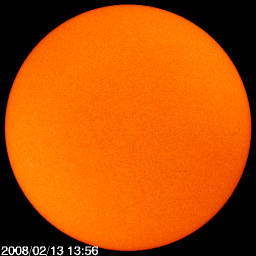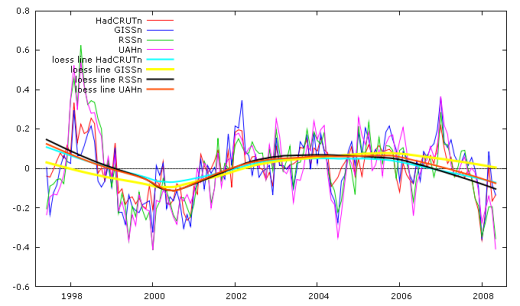Russian scientist says Earth could soon face new Ice Age
14:31|
22/
01/ 2008

ST. PETERSBURG, January 22 (RIA Novosti) - Temperatures on Earth have stabilized in the past decade, and the planet should brace itself for a new Ice Age rather than global warming, a Russian scientist said in an interview with RIA Novosti Tuesday. "Russian and foreign research data confirm that global temperatures in 2007 were practically similar to those in 2006, and, in general, identical to 1998-2006 temperatures, which, basically, means that the Earth passed the peak of global warming in 1998-2005," said Khabibullo Abdusamatov, head of a space research lab at the Pulkovo observatory in St. Petersburg.
According to the scientist, the concentration of carbon dioxide in the Earth's atmosphere has risen more than 4% in the past decade, but global warming has practically stopped. It confirms the theory of "solar" impact on changes in the Earth's climate, because the amount of solar energy reaching the planet has drastically decreased during the same period, the scientist said.
Had global temperatures directly responded to concentrations of "greenhouse" gases in the atmosphere, they would have risen by at least 0.1 Celsius in the past ten years, however, it never happened, he said.
"A year ago, many meteorologists predicted that higher levels of carbon dioxide in the atmosphere would make the year 2007 the hottest in the last decade, but, fortunately, these predictions did not become reality," Abdusamatov said.
He also said that in 2008, global temperatures would drop slightly, rather than rise, due to unprecedentedly low solar radiation in the past 30 years, and would continue decreasing even if industrial emissions of carbon dioxide reach record levels.
By 2041, solar activity will reach its minimum according to a 200-year cycle, and a deep cooling period will hit the Earth approximately in 2055-2060. It will last for about 45-65 years, the scientist added.
"By the mid-21st century the planet will face another Little Ice Age, similar to the Maunder Minimum, because the amount of solar radiation hitting the Earth has been constantly decreasing since the 1990s and will reach its minimum approximately in 2041," he said.
The Maunder Minimum occurred between 1645 and 1715, when only about 50 spots appeared on the Sun, as opposed to the typical 40,000-50,000 spots.
It coincided with the middle and coldest part of the so called Little Ice Age, during which Europe and North America were subjected to bitterly cold winters.
"However, the thermal inertia of the world's oceans and seas will delay a 'deep cooling' of the planet, and the new Ice Age will begin sometime during 2055-2060, probably lasting for several decades," Abdusamatov said.
Therefore, the Earth must brace itself for a growing ice cap, rather than rising waters in global oceans caused by ice melting.
Mankind will face serious economic, social, and demographic consequences of the coming Ice Age because it will directly affect more than 80% of the earth's population, the scientist concluded.
I find this article incredulous; what would a Russian know about cold weather?







